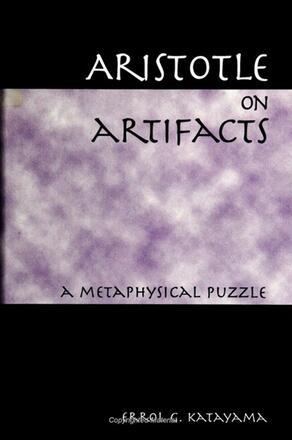
Aristotle on Artifacts
A Metaphysical Puzzle
Alternative formats available from:
Investigates Aristotle's views on the ontological status of artifacts in the Metaphysics, with implications for a variety of metaphysical problems.
Description
Previous commentators on the Metaphysics have attributed to Aristotle the belief that all living beings are substances. This book challenges the prevailing view by addressing the question of whether, according to Aristotle, artifacts are substances. By arguing that the two criteria of substantiality are "eternity" and "actuality" (thereby excluding some organisms), and by covering Aristotle's theory of art and nature as well as his embryology, Aristotle on Artifacts offers a novel way of dealing with a number of highly controversial issues and variety of metaphysical problems.
Errol G. Katayama is Assistant Professor in the Department of Philosophy at Iowa State University.
Reviews
"Does Aristotle maintain in the Metaphysics that artifacts are substances, or does he think they fall short of the criteria, whatever these are, of substantiality? This is the question Katayama sets out to answer in his book … On this ground alone Katayama's book deserves a careful reading by Aristotle scholars." — Ancient Philosophy
"Katayama does an excellent job of constructing a powerfully sustained argument by marshalling texts from the Metaphysics and Aristotle's biological works. He takes the reader through some of the most complex and difficult topics in Aristotelian philosophy while always keeping the main line of argument highly visible. This is no mean feat." — Michael Ferejohn, Duke University
"I like the methodological clarity and precision that isolates one problem from the interrelated network of metaphysical problems, clarifies it, hones the problem down to one key term ('apart from'), seeks a solution within the Metaphysics, decides that it is not to be found there, and finds it instead in Generation of Animals." — Martha Husein, Brock University